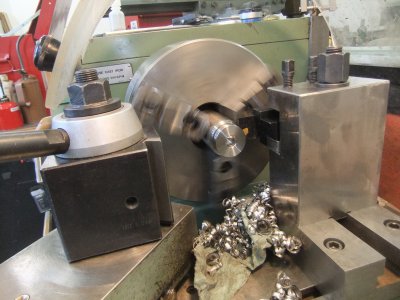- Joined
- Nov 2, 2014
- Messages
- 35
I've read and read about parting, but have a new issue I haven't read about before. I noticed today while parting, the rod/material being parted gets pulled slightly forward out of the chuck. At first I thought my tool post was moving to the left, but it's actually the workpiece moving to the right.
I've got everything locked down tight, just barely enough of the parting tool sticking out of the holder to cut the depth I need, touched up the parting tool with a stone before cutting, and tried to set the tool as perfectly midway up the part and perpendicular to the part as possible.
I'm guessing what I thought was perpendicular really wasn't, so I induced some axial force on the part? My 3-jaw chuck was hand tight, but the part pulled forward anyway. This was with 4140 steel, using dark sulfur cutting fluid.
Any ideas how to set the tool more perfectly perpendicular, or is this indicative of some other issue I'm missing?
I've got everything locked down tight, just barely enough of the parting tool sticking out of the holder to cut the depth I need, touched up the parting tool with a stone before cutting, and tried to set the tool as perfectly midway up the part and perpendicular to the part as possible.
I'm guessing what I thought was perpendicular really wasn't, so I induced some axial force on the part? My 3-jaw chuck was hand tight, but the part pulled forward anyway. This was with 4140 steel, using dark sulfur cutting fluid.
Any ideas how to set the tool more perfectly perpendicular, or is this indicative of some other issue I'm missing?

